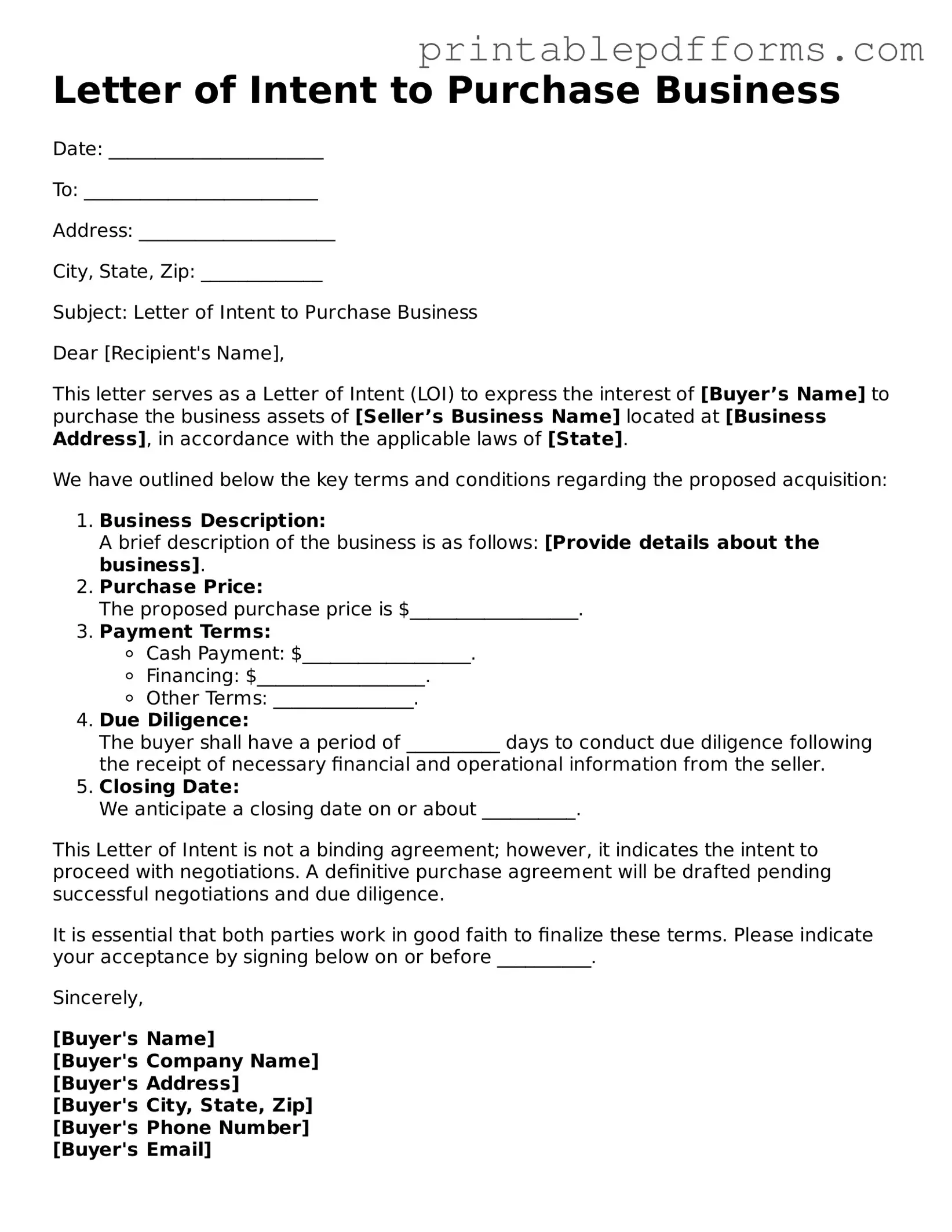Letter of Intent to Purchase Business
Date: _______________________
To: _________________________
Address: _____________________
City, State, Zip: _____________
Subject: Letter of Intent to Purchase Business
Dear [Recipient's Name],
This letter serves as a Letter of Intent (LOI) to express the interest of [Buyer’s Name] to purchase the business assets of [Seller’s Business Name] located at [Business Address], in accordance with the applicable laws of [State].
We have outlined below the key terms and conditions regarding the proposed acquisition:
- Business Description:
A brief description of the business is as follows: [Provide details about the business].
- Purchase Price:
The proposed purchase price is $__________________.
- Payment Terms:
- Cash Payment: $__________________.
- Financing: $__________________.
- Other Terms: _______________.
- Due Diligence:
The buyer shall have a period of __________ days to conduct due diligence following the receipt of necessary financial and operational information from the seller.
- Closing Date:
We anticipate a closing date on or about __________.
This Letter of Intent is not a binding agreement; however, it indicates the intent to proceed with negotiations. A definitive purchase agreement will be drafted pending successful negotiations and due diligence.
It is essential that both parties work in good faith to finalize these terms. Please indicate your acceptance by signing below on or before __________.
Sincerely,
[Buyer's Name]
[Buyer's Company Name]
[Buyer's Address]
[Buyer's City, State, Zip]
[Buyer's Phone Number]
[Buyer's Email]
Accepted by:
[Seller's Name]
[Seller's Company Name]
[Seller's Address]
[Seller's City, State, Zip]
[Seller's Phone Number]
[Seller's Email]
